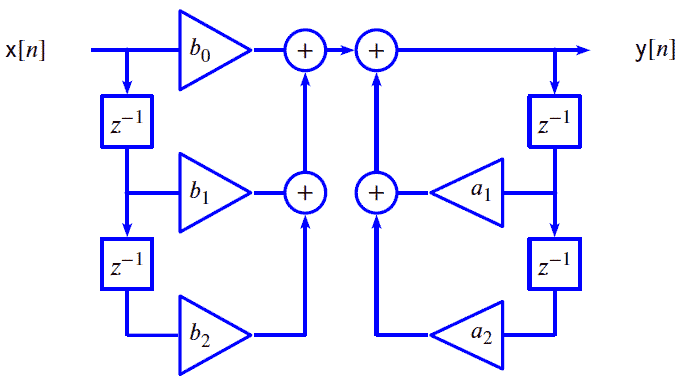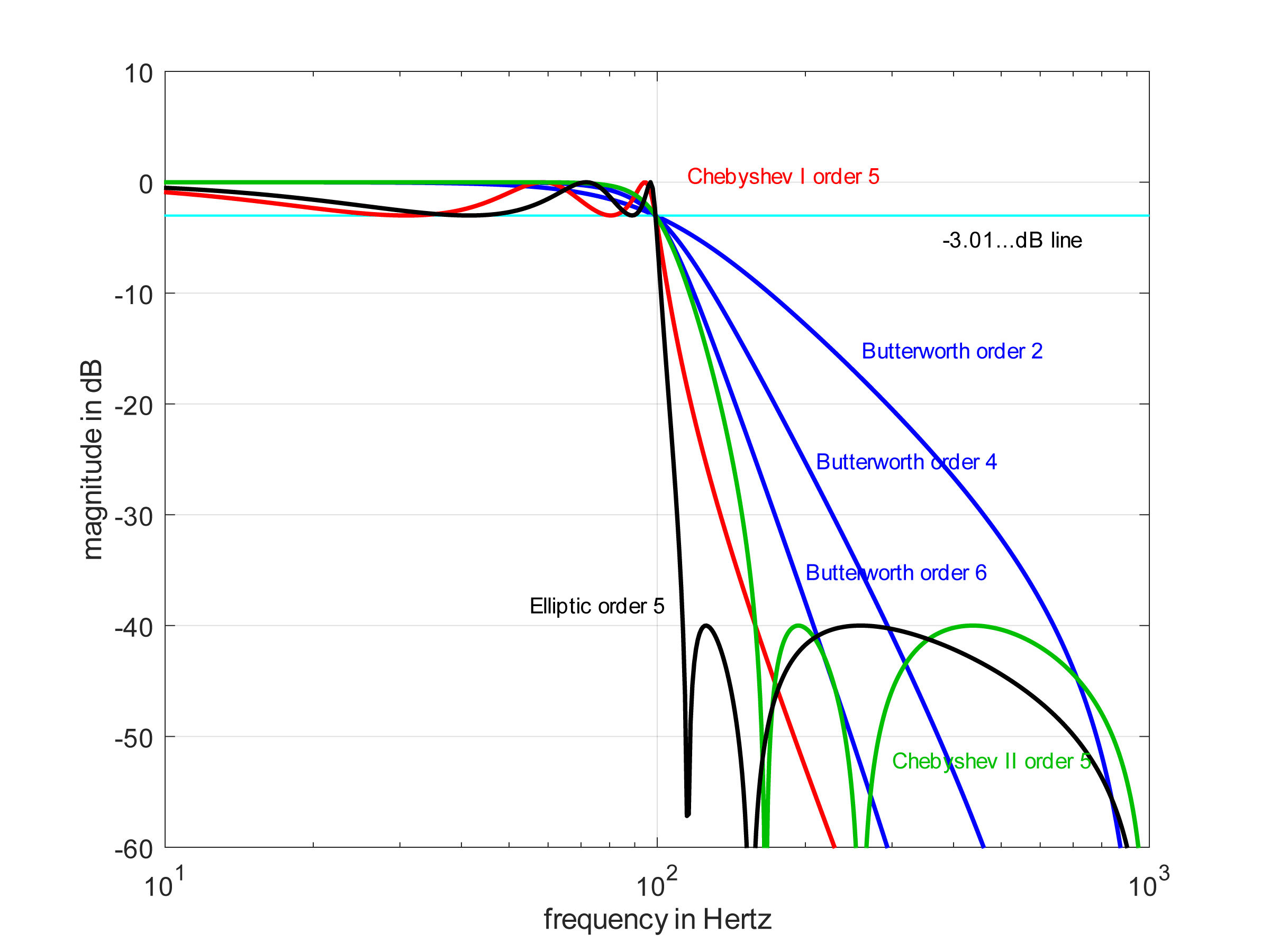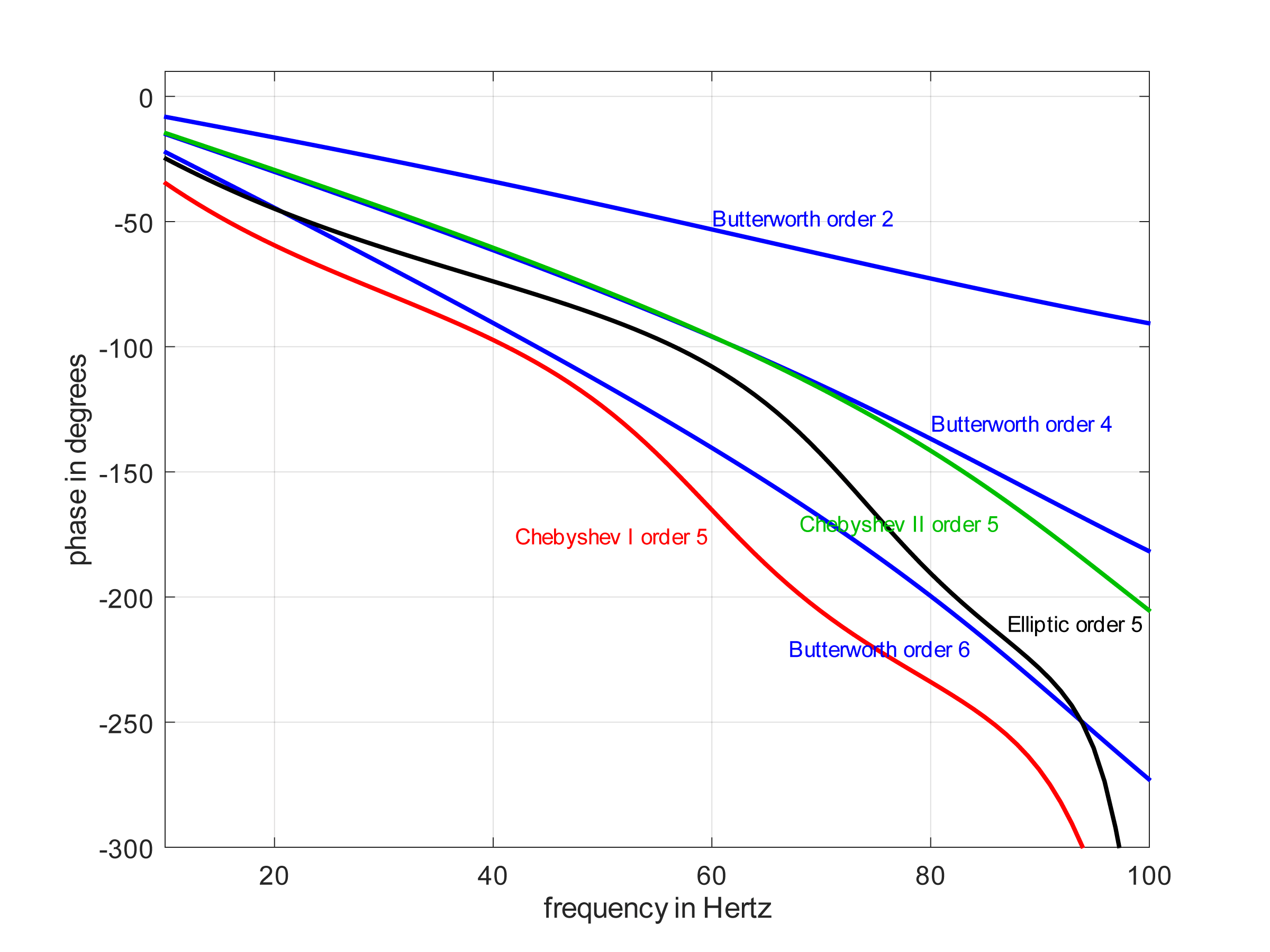IIR Filtering
June 2, 2021
Back to: Fundamentals of Signal Processing
As discussed in the previous lesson, an infinite impulse response (IIR) filter is one of two common digital filter architectures for processing vibration signals.
Feedback System
IIR filtering uses feedback to modify the frequency characteristics of data. A feedback system expresses the output as a combination of the input (a feed-forward system) and previous outputs. Theoretically, an IIR filter output will never reach zero after input excitation because of the output feedback loop.

Block diagram of a 2nd-order IIR filter.
IIR Filter Operations
The ObserVIEW IIR filtering utility can implement the following types of filter operations:
-
- Low-pass filter: Specify the desired corner frequency below which data frequency components pass and above which attenuation occurs
- High-pass filter: Specify the desired corner frequency above which data frequency components pass and below which attenuation occurs
- Bandpass filter: Perform bandpass filtering in the range f1 to f2 by selecting a high pass filter with a corner frequency set to f1 and a low pass filter with a corner frequency set to f2
Types of IIR Filtering
IIR filters are distinguished by two parameters: family type and order. The family types are Butterworth, Chebychev Type-I, Chebychev Type-II, and Elliptical.
Each filter has advantages and disadvantages, and selecting a filter generally involves considering the following characteristics.
- The amount of ripple in the passband.
The less ripple, the better. Engineers usually want a filter response to be as smooth as possible in the passband.
- The degree of roll-off after the corner frequency.
The faster the roll-off, the better. A faster roll-off is closer to an ideal filter, which has a vertical roll-off.
- The linearity of the phase response in the passband.
The more linear, the better. A linear phase response indicates that all the frequency components are delayed by the same amount of time when passing through the filter.
For example, the phase response is linear, and the corner frequency is 5,000Hz. If a 1,000Hz cosine is delayed by 2ms, then a 3,000Hz cosine is also delayed by 2ms.

Magnitude in the passband and stopband.

Phase in the passband.
Which IIR Type Should I Select?
Butterworth filters are maximally smooth in the passband. However, they do not roll off as fast as other filter types of the same order. If you are using a Butterworth filter and the roll-off is not enough, one solution is to switch to a different type of the same order with more ripple in the passband.
A second solution may be to keep the Butterworth but switch to a higher order. A higher order will increase the roll-off but may make the phase more non-linear. In the end, selecting the proper filter involves a trade-off.
Several notes:
- Butterworth and Chebyshev type-2 are smooth in the passband but begin to roll off much sooner than other filters.
- Chebyshev type-1 and Elliptical have ripple in the passband but keep within 0.05dB of unity gain out to the specified corner.
- Butterworth and Chebyshev type-1 decay continuously in the stopband. Therefore, they provide progressively better attenuation of high-frequency noise.
- Chebyshev type-2 and Elliptical have a sharp cutoff but a flat 40dB ripple in the stopband. They are good at attenuating frequencies just above the cutoff but aren’t as good at attenuating high-frequency noise.
